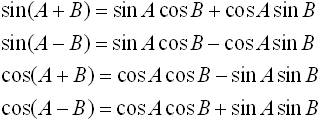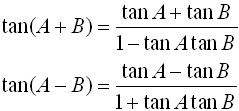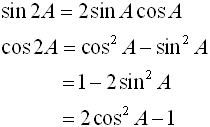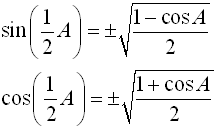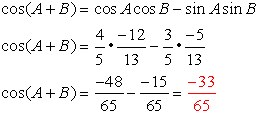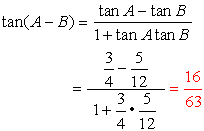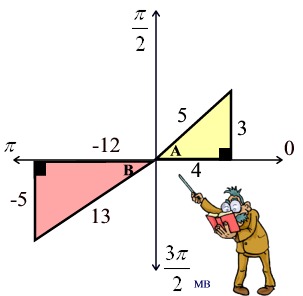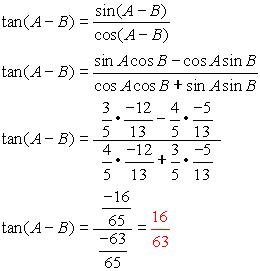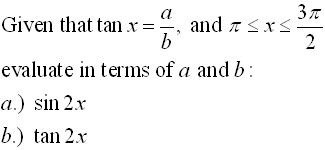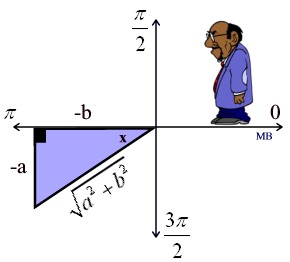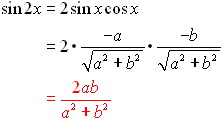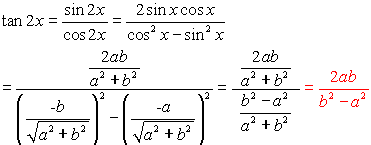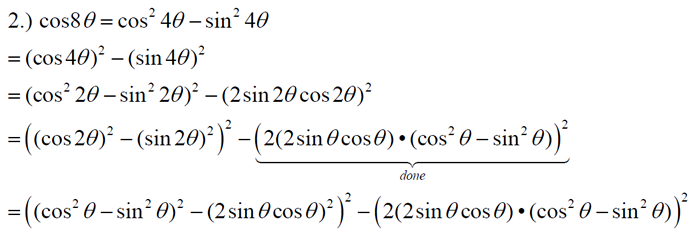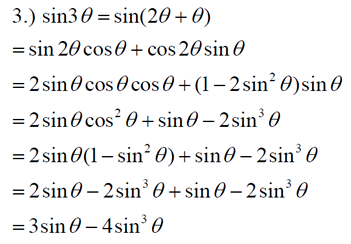Hipparchus, considered to be the most eminent of Greek astronomers (born 160 B.C.),
You can use the information you now know about working with trigonometric angles Now, let's play around with these new formulas to see if we can reduce them further.
Now, let's look at another situation where you are given a new equation and you are asked to verify if this new equation is an identity. Verify that the following new formula equation is an identity. (3) sin3θ = 3sinθ - 4sin3θ Possible Answer:
Topical Outline | Algebra 2 Outline | MathBitsNotebook.com | MathBits' Teacher Resources
|
||||||||||||||||||||||||||||||||

